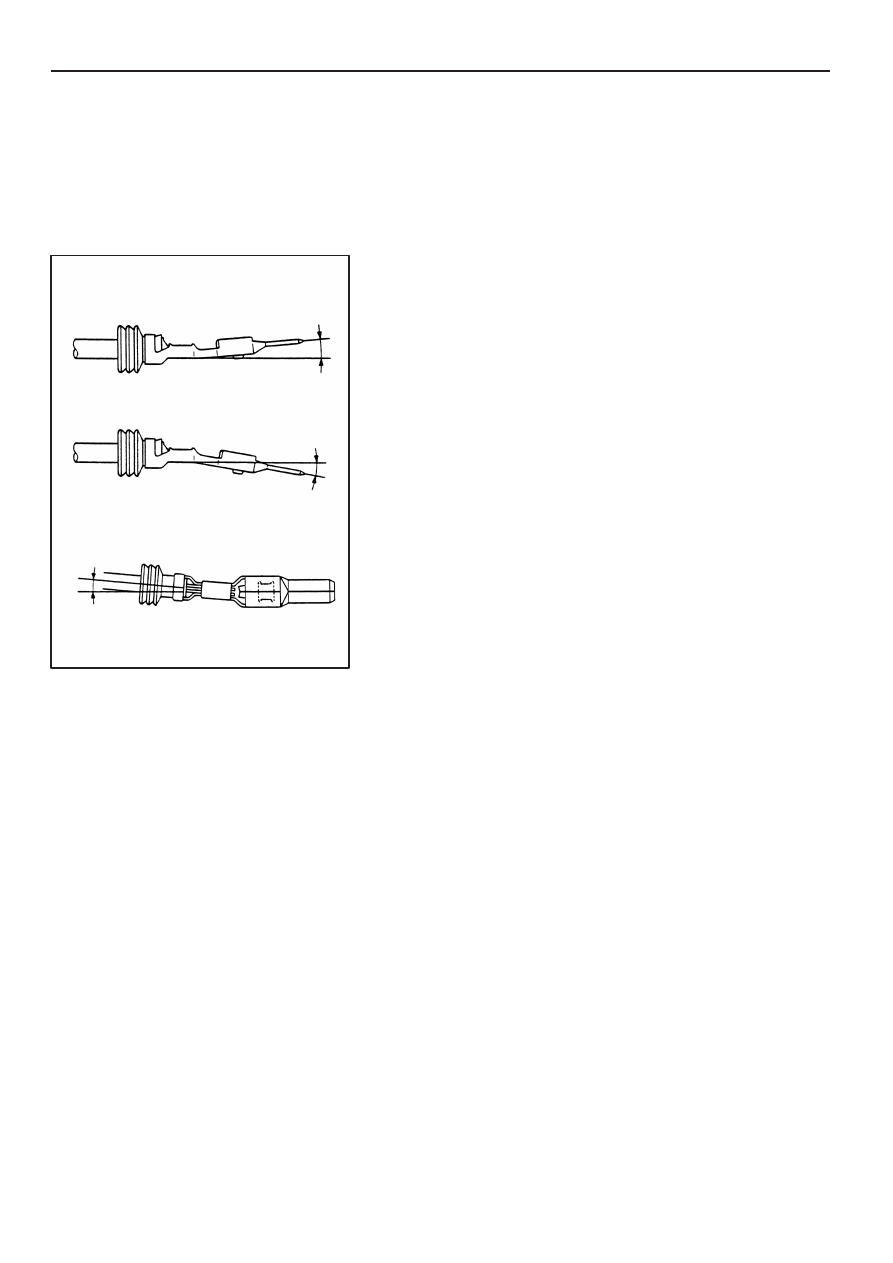Toyota RM06H0E engine. Manual - part 6

Terminal Deformation
(1)
Terminal Bending in Vertical Direction
(2)
Terminal Bending in Horizontal Direction
1
°
or less
1
°
or less
3°
or less
B–29
TERMINAL AND CONNECTOR REPAIR–TERMINAL REPLACEMENT
45
Wire Harness Repair Manual
(b)
Remove the insulation displacement female terminal
NOTICE:
D
Do not repair the insulation displacement female
terminal.
D
Always replace the part with a new one if any
terminals are removed.
5.
Inspect the terminal and the connector for
damage.
NOTE:
D
The locking clip is easily damaged.
D
Do not reuse the damaged part.